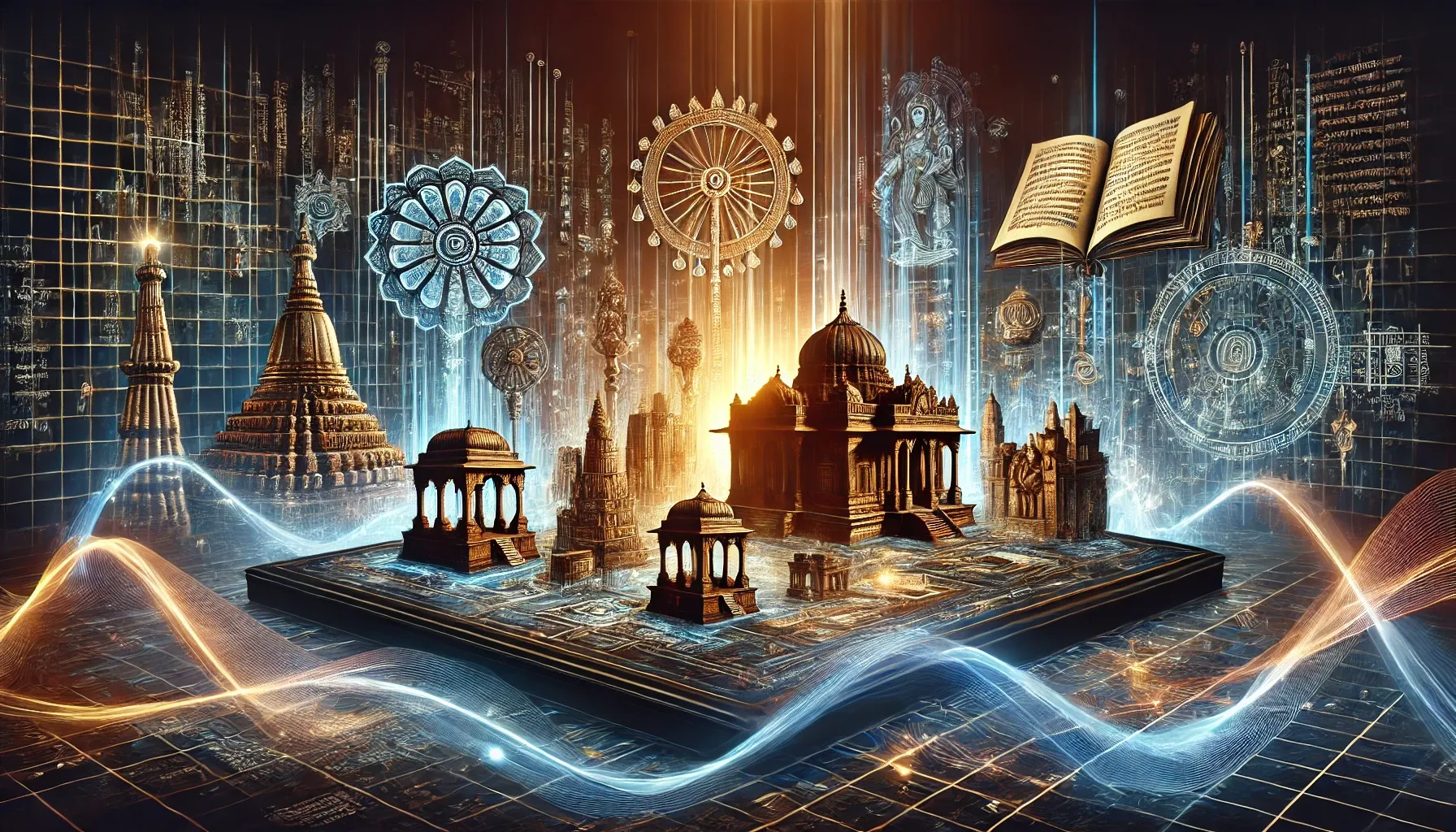UPSC
PIB
Digitisation of Cultural Heritage in India – PIB
Last Updated
19th March, 2025
Date Published
17th March, 2025
Share This Post With Someone

Context:
This analysis is titled "Digitisation of Cultural Heritage in India" under the Ministry of Culture. It outlines India’s initiatives to preserve its vast tangible heritage—monuments, sites, and antiquities—through the National Mission on Monuments and Antiquities (NMMA) and modern digital technologies.
- India’s Heritage Scope: India hosts a vast repository of tangible heritage from prehistoric to colonial times, much of which remains scattered or undocumented due to the lack of a unified database.
- Challenges: Fragmented efforts by ASI, State Archaeology Departments, and INTACH highlight the need for systematic documentation and management of heritage assets.
- NMMA Launch: Established in 2007 under the Ministry of Culture, the National Mission on Monuments and Antiquities (NMMA) aims to digitize and document India’s built heritage and antiquities.
- NMMA Achievements:
- Digitized 12,34,937 antiquities (4,46,068 from ASI, 7,88,869 from other institutions).
- Documented 11,406 built heritage sites and monuments.
- Allocated Rs. 20 lakh in FY 2024-25 budget.
- NMMA Objectives:
- Create a national database for research and management.
- Standardize documentation across institutions.
- Raise public awareness about heritage preservation.
- Train state departments, local bodies, museums, NGOs, and universities.
- Enhance collaboration between ASI, state departments, and stakeholders.
- Support publication and research.
- AMASR Act 1958: The Ancient Monuments and Archaeological Sites and Remains Act defines and protects monuments over 100 years old, including remains, sites, adjacent land, and access points, guiding NMMA’s scope.
- Cut-off Date: NMMA considers 1950 as the cut-off for pre-independence structures to be documented as historically significant built heritage.
- Antiquities Definition (1972 Act):
- Includes coins, sculptures, paintings, epigraphs, craftsmanship works, or objects from buildings/caves over 100 years old.
- Covers manuscripts, records, or documents over 75 years old with scientific, historical, literary, or aesthetic value.
- Art Treasures: Human artworks (not antiquities) declared by the Central Government for their artistic/aesthetic value under the Antiquities and Art Treasures Act, 1972.
- Digitization Standards:
- Photographs in uncompressed TIFF format (300 dpi) for built heritage and antiquities.
- NEF/RAW formats converted to TIFF without edits.
- Miniature paintings photographed or scanned in TIFF (300 dpi).
- Documentation in MS Excel with separate sheets per item, including embedded and master images.
- IHDS Initiative: The Indian Heritage in Digital Space (IHDS) uses advanced tech for immersive experiences and research beyond mere documentation.
- IHDS Objectives:
- Promote digital heritage research focused on Indian assets.
- Develop a crowdsourcing framework for public participation.
- Establish storage, curation, and distribution systems for multimedia heritage resources.
- Digital Tech Applications:
- 3D scanning, virtual reality, computer vision, and AI create high-resolution archives.
- Enable virtual reconstructions of damaged heritage.
- Offer interactive experiences for education/tourism.
- Enhance research for historians, architects, and scientists.
- Broader Impact: A unified database aids conservation, strengthens cultural identity, and ensures accessibility for future generations through NMMA’s efforts.
